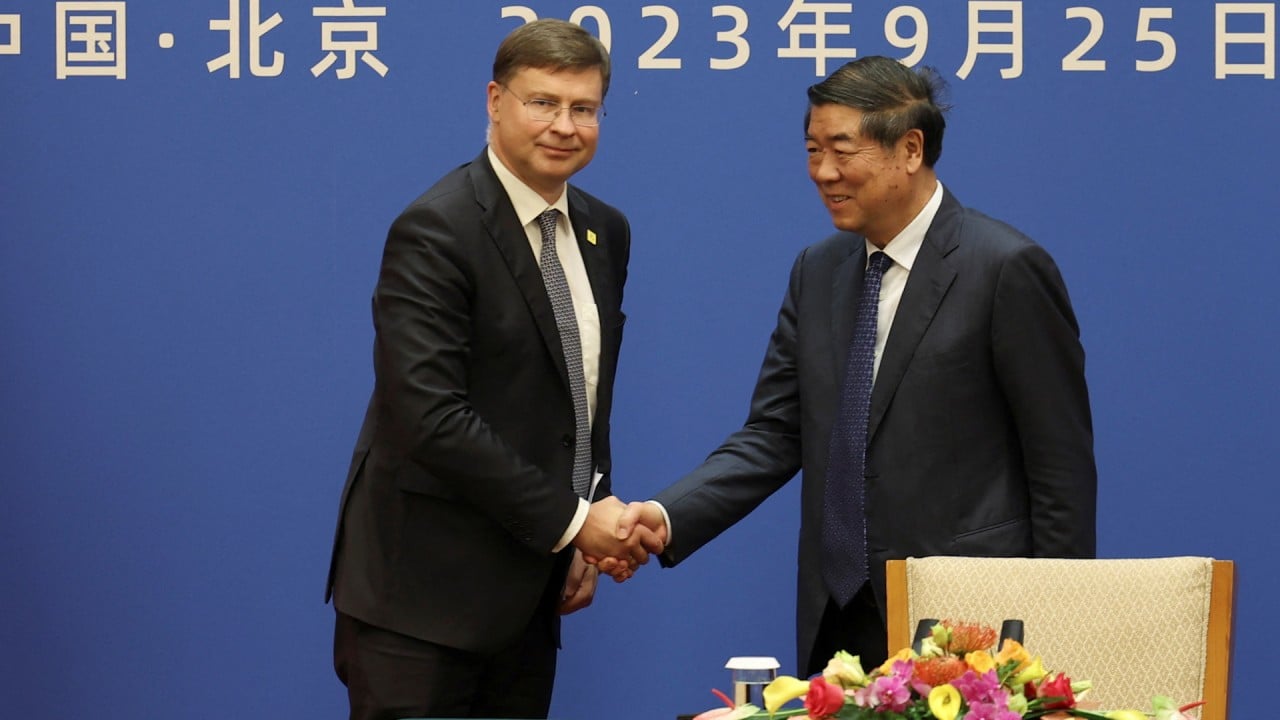
China’s manufacturers, exporters urged to speed up low-carbon transition as EU wields ‘trade weapon’ with import tax
- Carbon Border Adjustment Mechanism places a fair price on the carbon emitted during the production of carbon intensive goods entering the European Union
- Chinese officials have expressed strong opposition to the rule even though the short term impact on China’s manufacturing sector is seen to be limited
Chinese manufacturers and exporters should ramp up refining their carbon emission monitoring systems and expedite low-carbon transformations to avoid being replaced in the European Union under the bloc’s new tax, urged officials and industry insiders.
“The currently high-quality and low-price Chinese goods, coupled with the carbon tax that importers have to pay, will not be cheap any more and may lose a certain price competitiveness,” said Gai Lin, secretary general of EU-China Friendship Association.
Under the new mechanism, importers would have to pay the difference between the carbon emission price in the country of origin and that of domestic production in the EU.
Due to the additional costs incurred by the declaration process, the price of [Chinese] exports will inevitably increase
It initially applies to six industries: cement, iron and steel, aluminium, fertilisers, electricity and hydrogen.
The rules have been implemented since October, and during the transition period until the end of 2025, importers will only need to provide information on the carbon intensity of their products.
“European importers are likely to switch import partners if their suppliers are unable to provide data that meets their needs,” Gai said during an online seminar organised by the China Council for the Promotion of International Trade on Tuesday.
“Due to the additional costs incurred by the declaration process, the price of [Chinese] exports will inevitably increase.”
Chinese officials have expressed strong opposition to the rule, claiming it is a form of tariff barrier that does not comply with global trading rules.
China’s exposure to the mechanism is mostly concentrated in the steel industry. From January to November, China sent US$13.7 billion worth of iron and steel products to the EU, accounting for 3 per cent of its total exports to the bloc.
Though the short term impact on China’s manufacturing sector is limited due to the small exposure, the coverage may further expand, while more countries – such as the United States, Japan and Canada – may follow suit and adopt a similar approach, Gai added.
“It is possible that [climate policies] may eventually become a trade weapon towards China,” he said.
To keep normal trade flow in the future, Chinese firms should study the rules carefully and establish reliable carbon calculation methodologies for their products to ensure compliance, officials said.
It is imperative to respond to changes in global competition with a low-carbon development approach
Beijing is accelerating the low-carbon transformation of China’s energy system, and is optimising its own carbon tax and market pricing mechanism to achieve its carbon emission target and cope with the impact of the new rules, said Cai Chenfeng, director of the Commercial Legal Service Centre at the China Council for the Promotion of International Trade.
“Chinese companies also need to set corporate carbon emission goals, and understand the carbon tax-related policies from the EU as soon as possible, to avoid being taxed for high carbon emissions when exporting products,” Cai added during the seminar.
“It is imperative to respond to changes in global competition with a low-carbon development approach.”


